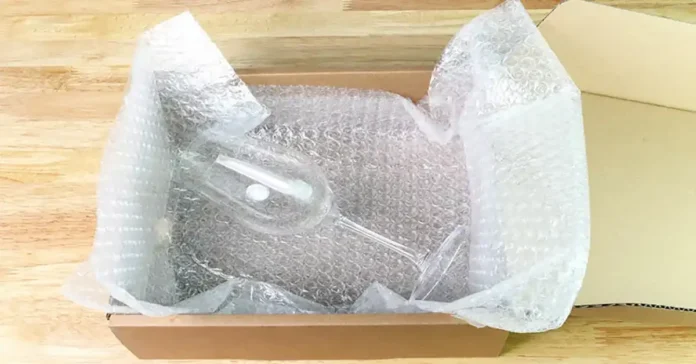In this fast-paced world, ensuring the safety of belongings during shifting and storage is essential. Whether you’re shipping fragile antiques, electronics, or glassware, finding the best packaging solutions is crucial to prevent costly damage. In our comprehensive guide, we will help you to secure your fragile items while storing them. We’ll walk you through innovative packaging materials and techniques that go beyond standard bubble wrap. From shock-absorbent boxes to custom foam inserts, discover how to shield your delicate treasures from bumps, drops, and vibrations.
Join us on this journey to safeguard your valuables and gain peace of mind knowing that your fragile items will arrive unscathed. If you are looking for tips to keep your chinaware and other delicate materials safe during moving, you are at the right place. These five proven tips will cover every detail that you need to know.
Why Is Safe Packaging Vital for Fragile Items?
First, it is important to acknowledge that fragile products like glass or brittle dinner sets cannot be packed the same way as other items in the house like furniture or clothing. Safe packaging is a necessity for any product, but the reasons are different. Apart from keeping your items dust-free, your storage packing also must be careful about breakage and scratches.
Your fragile item could also go through multiple hands before reaching your leased storage unit, like movers or another family member. During transportation, there is a great likelihood of the boxes getting jostled about, bumped into each other, and causing frictional damage. Friction can cause wear and tear on the package, and even damage the contents inside. That damage can happen at any point along the route.
If the package is not strong enough to withstand all the friction and wear and tear, it will eventually break down. From delicate glassware to antique artwork, our article on Safely Packing Fragile Items for Storage provides valuable tips for storing a wide range of fragile items.
You can help by making sure that you pack your items in a fool-proof manner, by following these five pro-tips:
Pro-tip 1: Choose the Right Packing Materials
There are distinct types of packaging available to confuse you if you are packing for the first time. You need to consider what type of material will best protect your delicate wares. If you choose low-quality materials, these materials may not hold up well during transport or long-term storage. At the same time, you need to offset for costs and not invest in unnecessarily expensive storage material.
Hence, a good place is to list out your items and write the type of packing material you want to use against it. This way, you can optimise on the right material instead of using a one-size-fits-all. For example, a heavy item, like a large mirror, will require a strong package but a lighter item could be packed in a polyurethane bag.
Another important consideration is leaving room for extra padding in the box. For sensitive material like glassware, always bring a box which is a size larger than the item to allow for soft packing material to be put around it. Sometimes owners also like to put two layers of boxes to provide natural cushioning.
Fragile items such as ceramics, glassware, and electronics require special attention during relocation, and our tips for safely packing fragile Items for storage can help you do just that.
Pro-tip 2: Wrap All Items Separately
One of the most common packing mistakes with fragile items is to pack related items together, for example, place all the kitchenware together. Doing so will increase the risk of scratches and hence, damage of the material. Wrap each item individually and if any of those components are sensitive to moisture, put them in a sealed container inside another larger container. You can also wrap the smaller containers in bubble wrap before putting them in the larger box.
Super-pro tip: Use cardboard dividers or cell boxes to pack your glasses and flutes. Cell boxes are especially useful for stemware because they allow you to pack multiple glasses together.
Pro-tip 3: Cushioning the Fragile Items
If you try to cram too many items into one box, they may press against each other and break. On the other hand, if you pack too few items, shifting during transit can lead to breakage as well. Hence, a good rule of thumb is to put at least 50% of the weight of the total contents in the packaging. Packaging materials need to be chosen carefully too. Non-abrasive, non-reactive and non-scratch materials like old clothes are the best.
Pro-tip 4: Use the Right Sealing Material
This aspect gets truly little attention when packing. The go-to sealing solution is duct tape or cellophane tape but there are distinct types available, each with their own properties. Choose the right type depending on what you are packaging. For example, if you are packing fragile items like glassware, you will want to use heat activated tape.
Heat will activate the glue and help prevent breakage during shipping. Polyurethane bags are also commonly used for packing delicate items. These bags are made of flexible plastic and are designed to keep contents safe during transit. Use clear tape to seal the bag and avoid damaging the contents inside. Do not use straps or strings to seal boxes containing fragile items. There is a high chance that our contents will get damaged if you use them.
Pro-tip 5: Do not elevate Fragile Items
For most other pieces of storage, elevation is recommended. However, when storing breakables, it is important to keep them near the floor. Items that weigh more than twenty-five pounds per square foot should not be stacked above five feet. If you need to stack items higher than that, consider using pallets instead. Pallets are designed to hold copious quantities of items, making them an ideal solution for breakable inventory storage.
Final Words for Fragile Item Storage
Securing your goods with the best packaging for fragile items is not just about finding the right materials; it’s about ensuring a seamless journey of relocation. A self-storage unit like one of Self Storage India’s private rooms provides excellent protection for your items when they are being stored. However, the process of bringing them into the storage facility, placing them appropriately within the leased self-storage unit, and removing them or other items from the storage unit introduces challenges for the packaging. Hence, safe packaging practices must be followed.
From choosing the right packaging materials to handling and positioning your items with care, every step plays a crucial role in maintaining their integrity. With the use of the best packaging solutions and responsible handling practices, you can confidently secure your valuables and enjoy peace of mind, knowing that they are well-protected throughout their journey.
FAQs for Fragile Item Storage
A: The best packaging materials for fragile items are bubble wrap, foam inserts, padded envelopes, and corrugated boxes.
A: You can prevent fragile items from breaking during shipping by using sturdy boxes, cushioning materials like bubble wrap or foam, and labeling the package as fragile.
A: Yes, delicate electronics should be packed in anti-static packaging materials to prevent damage from static electricity.
A: Yes, it is best to use new packaging materials for fragile items to get maximum protection, but you can reuse materials if they are still in good condition
A: You can do this by gently shaking the box to see the state of the product. If they are moving you can add more cushioning.
A: For large fragile items, consider custom packaging solutions or professional packing services to ensure proper protection.
A: Yes, labeling packages as fragile alerts handlers to handle them with care and can reduce the risk of damage during shifting.
A: Yes, you can buy shipping insurance to protect the fragile items in case of damage or loss during transit.
A: Store fragile items in a secure place away from busy areas and use protective storage containers or shelves to prevent accidents.
A: If your fragile item arrives damaged, click pictures and videos for the same and contact the shipping carrier or retailer for replacement.







